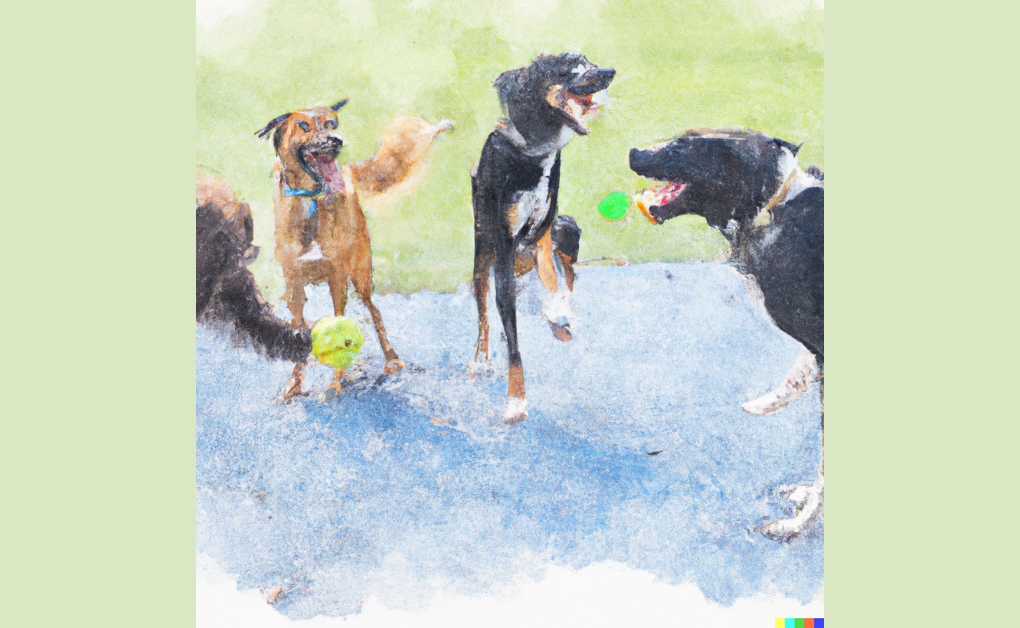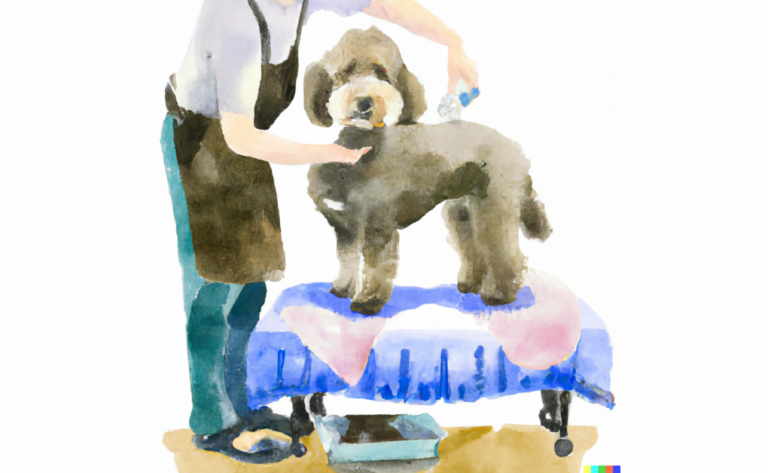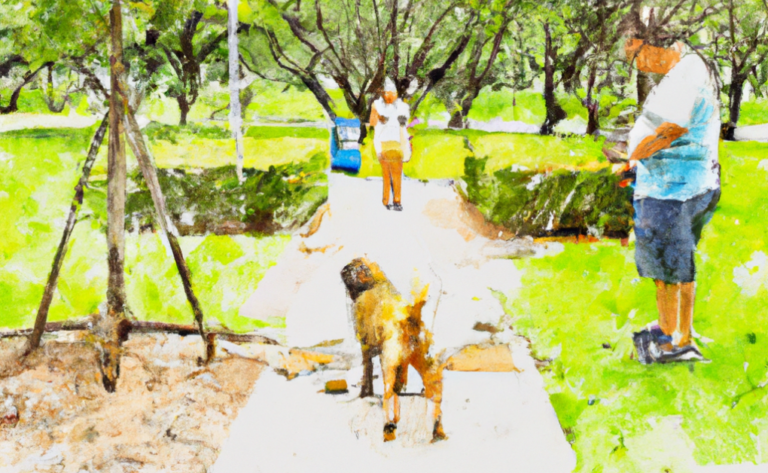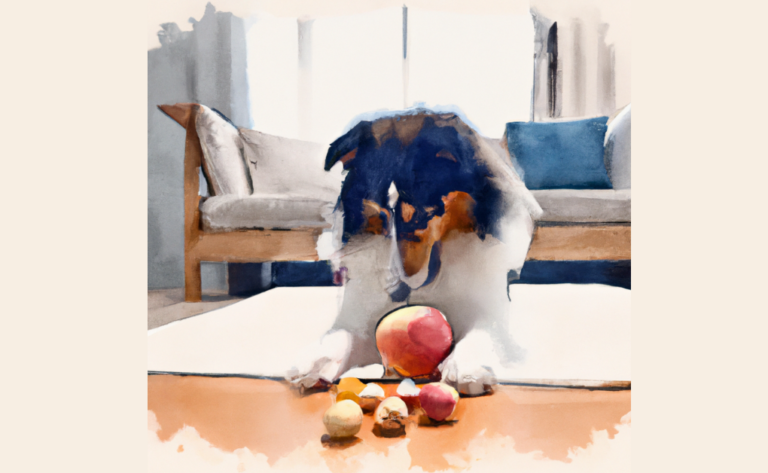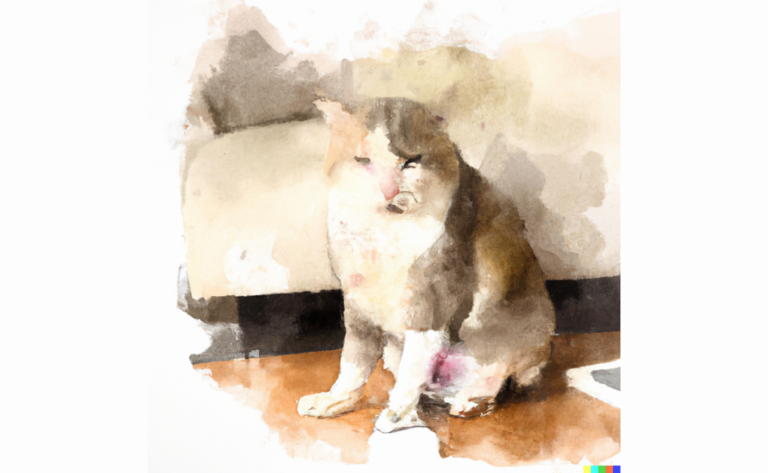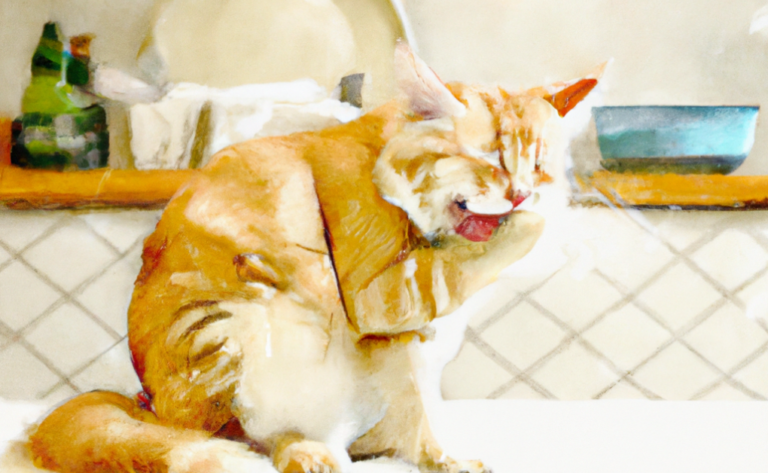How Great Dog Owners Think About Dog Parks
Introduction
When Sarah first adopted her energetic Golden Retriever, Max, she was eager to provide him with the best life possible. After a casual conversation with a fellow dog owner, she discovered the exciting world of dog parks. Intrigued, she decided to investigate further and quickly learned how beneficial these parks could be for Max’s socialization and exercise.
Are you curious why so many people bring their dogs to dog parks? Most dog owners are concerned about how their pup behaves in areas where there are other pups and people.
Dog parks are often bustling with various personalities—both human and canine! Loyalty, obedience, and socialization are all essential traits that a great dog parent should consider when introducing a pup to a new environment.
Many people are apprehensive about taking their furry friends to the park. Still, it doesn’t have to be intimidating if you’re aware of what good dog owners think before they go. So before heading off to your local dog park, here’s what you need to know.
How to Safely Enjoy a Dog Park
Dog parks are a great way to get your pup out of the house and socialize with other dogs. In addition, they allow your pet to exercise and blow off steam while giving you a chance to get out of the house and enjoy some fresh air.
So, to ensure a safe and enjoyable experience for you and your dog, it is essential to familiarize yourself with the rules and etiquette of each dog park you visit. In addition, when visiting a dog park, it is necessary to follow social activity guidelines.
Keep an Eye on Your Pet at All Times.
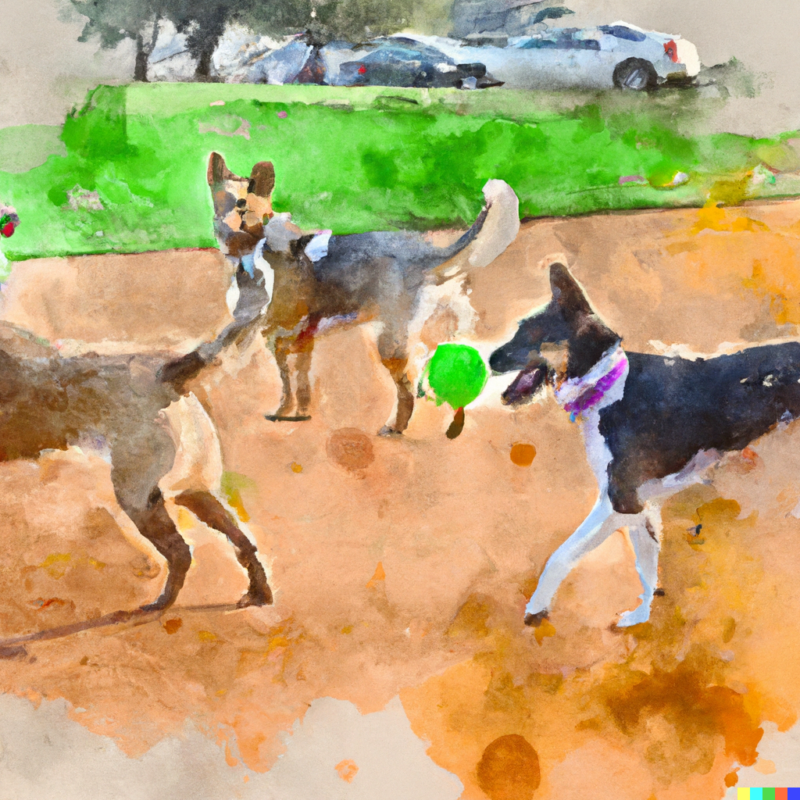
One of the most important things to remember as a great dog owner is always keep an eye on your pet. Dog parks can be full of other dogs who may need to be more well-trained or get into trouble while having fun and exploring.
It’s wise to bring a buddy and take turns watching your pet or use the buddy system by asking other owners if they wouldn’t mind keeping an eye on your pup while you watch theirs. That way, you can stay alert and prevent any negative experiences in the park – some owners may even choose to leash their pups until they trust them off-leash around others.
It’s also important to know that dogs are naturally excited, curious, and exploratory while at dog parks. Still, it’s up to owners to ensure their safety and comfort by being aware of their surroundings and prepared for any situation that might arise. Additionally, ensure you have a good handle on basic obedience training, so your pup knows boundaries when interacting with other dogs in the park.
Make Sure They are Not Being Overly Aggressive or Disruptive
Make sure your pup can stay calm and be friendly toward other dogs. Overly aggressive behavior and disruption are not tolerated in any way, which is why your puppy must learn basic socialization skills before going to the park.
It’s also essential for great dog owners to monitor their pups closely when at the park. It’s easy for an excited puppy to get carried away in the excitement and become too bold or aggressive. Great owners quickly break up scuffles when they begin and focus on positive reinforcement methods instead of punishing their pup if they do something wrong while at the park.
Clean up After Them if Necessary
One of the things dog owners understand is that one of their responsibilities at the dog park is to keep it clean. That means cleaning up after your pup and any other messes that may have been left behind. It is a common courtesy to other parkgoers and is especially important for dogs’ overall health and safety.
When visiting any park area, be it a dog park or otherwise, you should always be aware of your pet’s behavior and take responsibility for them if they make a mess. Also, make sure you have the right supplies, such as sturdy poop bags and hand sanitizer, just in case you find yourself in need. It only takes a few moments to do some clean-up while there and can go a long way in keeping the area safe and enjoyable for yourself and other visitors.
Please Ensure Your Pet is Up-to-Date on Their Vaccinations Before Entering any Dog Park.
It doesn’t take much time or expense to schedule visits to the vet and have them vaccinated. Still, it’s crucial to protect your pet from exposure to any contagious diseases or illnesses. Also, checking with your vet can help you further if additional shots may be necessary for frequent or prolonged visits at the dog park.
You’ll also want to ensure that their health records are up-to-date with updated information about their vaccinations, vaccination schedules, and current medical knowledge. It’s all part of being a responsible dog owner and helping ensure everyone stays safe and healthy when we create these gatherings of beautiful puppies!
Please Keep in Mind any Potential Hazards.
Please know about any potential hazards at the dog park. That means being mindful of other animals and people and obstacles like low-hanging branches or objects such as broken glass or sharp objects that could injure your pup.
As a responsible pet parent, you should monitor your pup’s behavior in the park, so they don’t get into trouble. Watch out for fences with sharp points, busy roads nearby, and tree stumps that could trip up an unsuspecting dog.
Following these simple guidelines ensures that you and your pup have a safe and enjoyable experience at the dog park.
Can You Make Your Dog like Dog Parks?
Dog parks allow people to exercise their dogs and watch them play with other canines, and they also serve as a social center for people to chat and exchange news. First, however, it is essential to know the potential risks associated with dog parks. For example, dogs may appear aggressive when uncomfortable with unfamiliar faces, and poorly managed interactions can lead to better learning experiences for the dog and its owner.
Making sure your dog likes dog parks will take time and patience. The best way to ensure your dog likes dog parks is by introducing them to the environment as puppies and showing them that they can have fun while being safe.
Start small. Wait to take your dog straight to a noisy, crowded park. Instead, pick a quiet park close to home and visit for short but regular visits. Allow the pup to learn about the new environment at its own pace. Let the puppy explore on his own and reward him when he makes something sound, like not barking or growling at other dogs. This way, you’re teaching your pup basic socialization rules, creating positive associations with going to the dog park later in life.
As your pup becomes more comfortable, gradually progress towards busier parks where they can interact with other dogs more often. Reward their good behavior during those visits with treats so their positive reinforcement continues even when surrounded by what could otherwise be seen as intimidating stimuli.
Make sure that your pet is comfortable in the environment before allowing them to interact with other dogs, as this will help prevent any potential behavioral problems from arising. Additionally, follow social activity guidelines when visiting a dog park; this includes keeping an eye on your pet at all times, not leaving food or toys out in the open, and cleaning up after yourself and your pet. With these simple steps, you can ensure that you and your pup have a great time at the dog park.
Behavioral Tips to Follow When at the Dog Park
When attending a dog park, there are a few essential behavioral tips that all dog owners should follow. First and foremost, keep your pup on its leash until they’re inside the fenced-in area. This ensures that all dogs in the vicinity feel safe and that no unwelcome surprises occur between ownerless pups. Remote collar training is one of the finest methods to teach your dog to be 100% off-leash trustworthy.
Also, could you make sure to clean up after your pup? Dog messes can cause dangerous infections for other animals in the area, and if everyone does their part, it keeps the park healthy and enjoyable for all who attend.
Before entering the park, it’s essential to check the entrance for any signs of aggression or fear from other dogs.
If you notice any signs of aggression or fear, it’s best to avoid that area and find another spot in the park. It’s also essential to respect your dog’s wishes if they want to leave the park at any time.
It’s essential to pay attention to how your pup interacts with the other furry guests too! If they seem overwhelmed or aggressive towards other dogs, don’t hesitate to leash them up and take a break. Also, please look at which playmates they like playing with most so you can plan future visits accordingly.
The park offers a variety of activities for both you and your pup. There is a spring swimming pond, trees for shade, and an off-leash area for dogs. For smaller dogs, there is also a separate area where they can play without being overwhelmed by larger breeds.
Additionally, it’s important to remember not to bring unique toys with you as this can cause jealousy among other dogs. By following these simple tips, you can ensure a safe and enjoyable experience for you and your pup at the Pets & People Dog Park.
Modern Dog Owners
Modern dog owners face a difficult decision when it comes to choosing whether or not to visit public dog parks. While these spaces can provide socialization and exercise, several factors must be considered.
Pet owners should consider their dog’s sociability, the size and terrain of local off-leash areas, and their region’s general dog ownership culture before deciding whether to visit public dog parks. Additionally, owners should know what they will do if something goes wrong on a public dog park visit, such as having access to emergency vets and trusted trainers nearby.
Unfortunately, irresponsible behavior from a few owners is often seen in public dog parks. According to a survey by the American Veterinary Medical Association (AVMA), 26% of respondents feel that other dog owners are irresponsible in public.
This can create an unsafe environment for both dogs and humans alike. The open nature of public dog parks limits the control available to prevent such behavior, making it essential for owners to be aware of their own dog’s behavior and the behavior of other dogs in the park.
By following these guidelines, modern dog owners can ensure that they and their pups have a safe and enjoyable experience when visiting public dog parks. By being aware of potential hazards, understanding social activity guidelines, and keeping an eye on their pet at all times, owners can help create a safe and enjoyable environment for all.
Pet Owner’s Concerns About Dog Parks
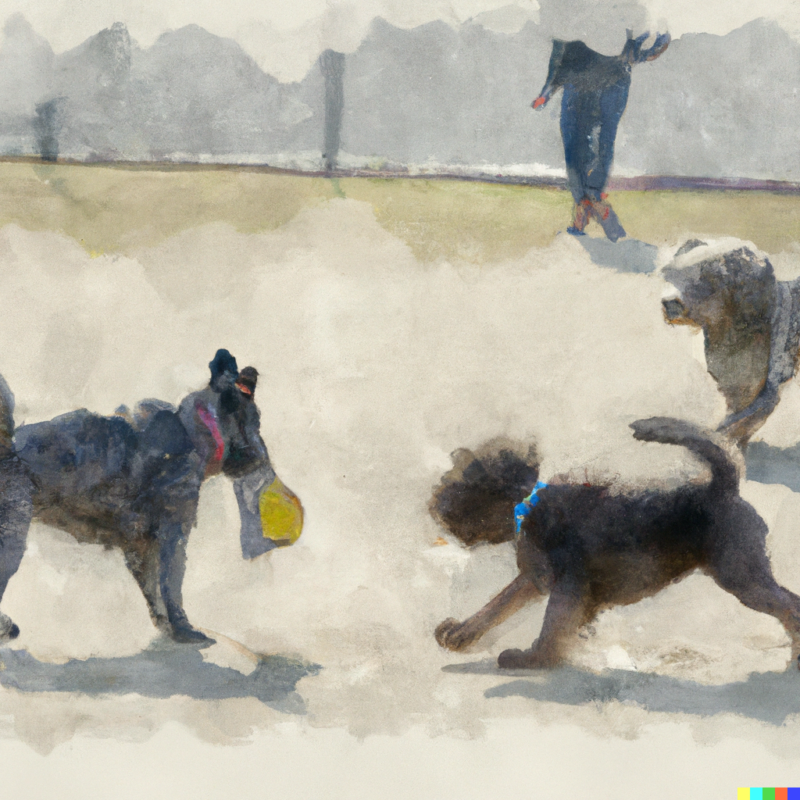
Public dog parks can be an excellent way for owners to give their dogs much-needed exercise and socialization. However, before taking your pup to the park, some potential risks should be considered.
First, it is essential to remember that public dog parks can be a source of potential danger for dogs, such as the risk of injury from other dogs or exposure to contagious diseases. In addition, dog owners may not be able to properly monitor their pet’s behavior in an off-leash environment, leading to potential conflicts with other animals or people.
Public dog parks may also lack proper maintenance and safety protocols, which could lead to hazards such as broken glass or sharp objects that injure pets.
To ensure the safety of all visitors and their pets at public dog parks, parks require strict compliance with leash laws and the removal of dog waste at all times. Visitors must have a leash on hand for each dog, and children under ten years old are prohibited from entering the park without an adult.
Additionally, all dogs must be up-to-date on their vaccinations before entering the park. By following these simple guidelines, pet owners can ensure that both they and their pups have a safe and enjoyable experience at the dog park.
Frequently Asked Questions
Disclaimer: The information provided on this veterinary website is intended for general educational purposes only and should not be considered as a substitute for professional veterinary advice, diagnosis, or treatment. Always consult a licensed veterinarian for any concerns or questions regarding the health and well-being of your pet. This website does not claim to cover every possible situation or provide exhaustive knowledge on the subjects presented. The owners and contributors of this website are not responsible for any harm or loss that may result from the use or misuse of the information provided herein.

